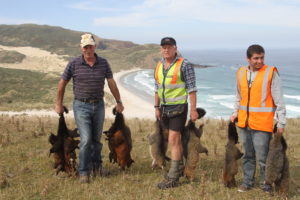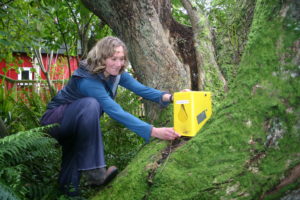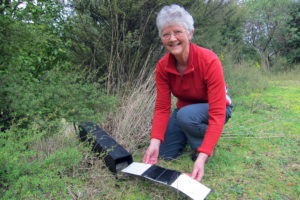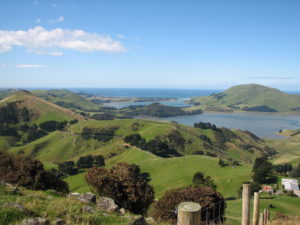An art exhibition is an unusual way to tackle introduced pests, but ‘Citizen Sci-Art’, on show at the Portobello Hall for the weekend 27-28 February, is the latest in many initiatives by the Otago Peninsula Biodiversity Group (OPBG) and their supporters to get out and about and talking to their local community.
Subtitled ‘from Stewart Island to the Otago Peninsula’, the travelling art exhibition features works by the Stewart Island/Rakiura community on a theme of Conservation and Predator Control – a theme close to the heart of both communities.
Members of the Otago Peninsula Biodiversity Group, with Science Communicators Jenny Rock and Ellen Sima, will be on hand over the two-day period and visitors to the exhibition will be able explore predator-control techniques with OPBG guidance, find out about what they can do on their own property and even try their hand at conservation-themed printmaking with tuition from Otago Peninsula artist and printmaker, Lynn Taylor.
It’s important to take the time to talk to people, according to Cathy Rufaut, Project Manager for OPBG and the group is making an all-out effort to meet its community. Last year five public meetings were held, a big increase on the 1-3 meetings they usually hold in any one year.
There have been mailbox drops, 230 people are on the regular mailing list, there’s a dedicated website and a facebook page is being developed. It all helps to get locals talking and thinking about what they want for their community in the future. But what works best – what Cathy finds gives the greatest ‘buy-in’ – is simply talking to people one-on-one.
“Talking one-on-one means a lot of field work,” says Cathy. “It’s about responding to requests for help or information, perhaps initially with a phone-call, then, if the person is keen, making a time to meet up with them in person”. It helps to personalise the project and show that every individual community member’s support and involvement is important to the success of the project overall.
The Otago Peninsula Biodiversity Group has one very clear vision: they want their 9,500 ha peninsula to be completely pest-free by 2050. It’s an ambitious aim and it will require the support of the whole community for the project to succeed – hence the effort to meet, talk and listen to the community at every opportunity. The initial phase of the group’s operation – their flagship project – has focussed on removing possums from the Otago Peninsula. They’re an ideal starting point, according to Cathy, because possums essentially ‘stand alone’ in the food chain. You can take them out of the environment and not have a flow-on effect.

Possums are a big issue for many on the peninsula. Farmers are concerned with the productivity of their land and herd protection. Bovine TB has never been detected on Otago Peninsula and they want to keep it that way. Others in the community have made a lifestyle choice to live on Otago Peninsula and want to grow home produce, plant fruit trees and harvest walnuts without possums getting to their produce first. Before possum control began, such was the possum problem that some people felt they couldn’t have a vegetable garden at all.
At least 9,300 possums have been removed from Otago Peninsula since operations began in 2011 and that’s just the official OPBG count. Not all residents who are trapping on their own properties record their catches.
A new three-year possum control programme is beginning in 2016. By 2018 the aim is to have cleared all possums with a residual trap catch of 1% or less over the entire peninsula.
There are several small township settlements across the peninsula and in these more urban settings it is generally the ‘yellow box’ Timms traps and live traps that are used. Cathy has noticed, however, that residents are also starting to use Goodnature A12 self-resetting possum traps, which are ideal for those who don’t want to be so actively involved in dealing with the checking and clearing of traps.
On farmland, Department of Conservation and Dunedin City Council reserves, feratox cyanide poison is used under strict consent conditions. It kills rapidly and humanely and, unlike brodifacoum, is very biodegradable in the environment.
The art exhibition from 27-28 February will be a chance not only to ‘talk possum’ with interested locals, but also to ask ‘what next?’ What might operation ‘Beyond Possums’ entail?
Cathy hopes to build a sense of empowerment in her community, a feeling of community members working together. Rats are another issue for peninsula residents and in 2-3 years time the Otago Peninsula Biodiversity Group hopes to have a direct input to controlling rat numbers on the ground. But in the meantime, they’ll be available at the exhibition to advise people on how best they can start tackling the rat problem themselves at home. Cathy’s hope is that while the OPBG is finishing off the possums, the wider peninsula community will start chipping away at rats.




